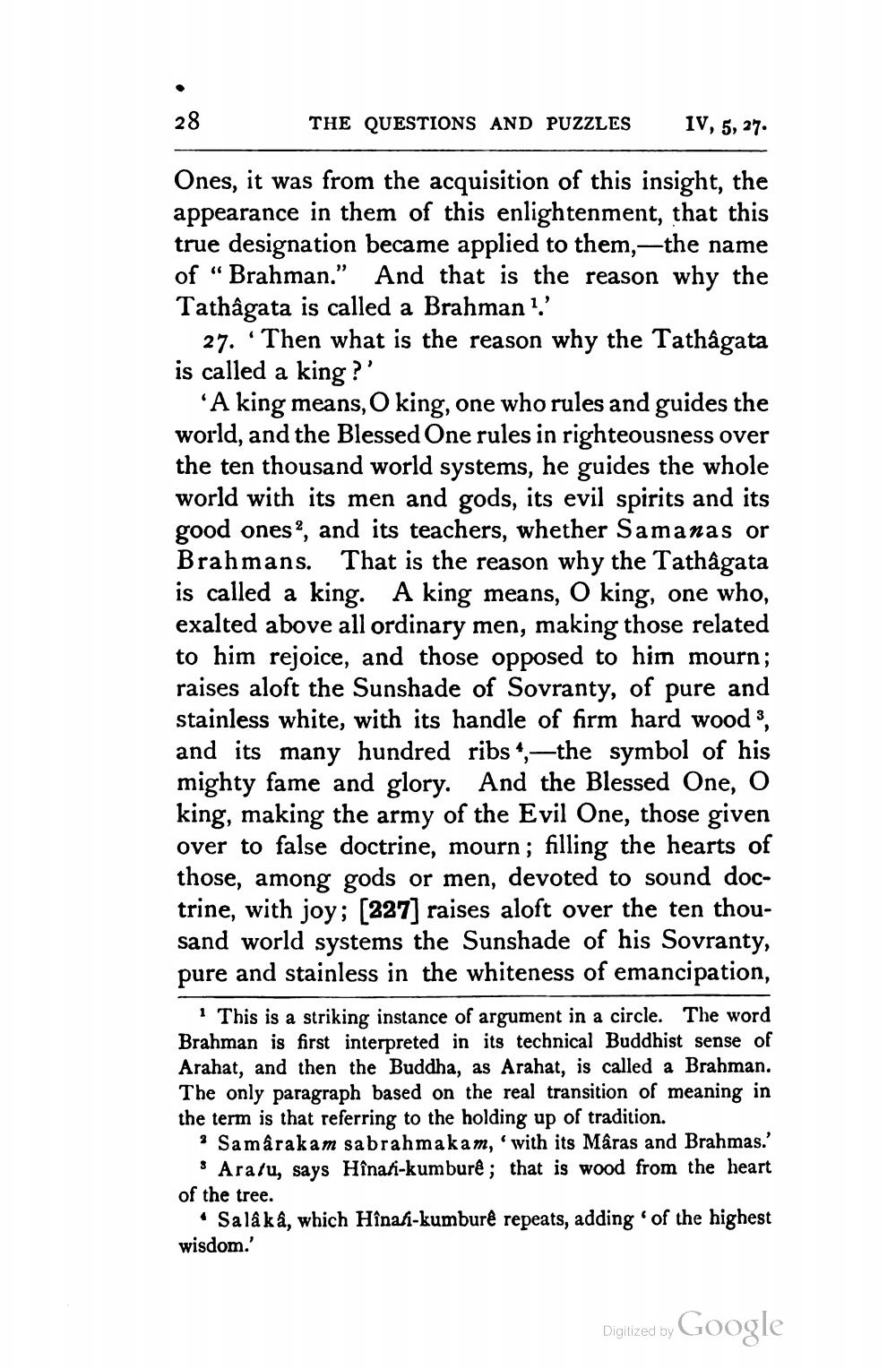________________
28
THE QUESTIONS AND PUZZLES
IV, 5, 27.
Ones, it was from the acquisition of this insight, the appearance in them of this enlightenment, that this true designation became applied to them,--the name of “Brahman.” And that is the reason why the Tathagata is called a Brahman?'
27. “Then what is the reason why the Tathagata is called a king ?'
‘A king means, O king, one who rules and guides the world, and the Blessed One rules in righteousness over the ten thousand world systems, he guides the whole world with its men and gods, its evil spirits and its good ones, and its teachers, whether Samanas or Brahmans. That is the reason why the Tathagata is called a king. A king means, O king, one who, exalted above all ordinary men, making those related to him rejoice, and those opposed to him mourn; raises aloft the Sunshade of Sovranty, of pure and stainless white, with its handle of firm hard wood 3, and its many hundred ribs“,—the symbol of his mighty fame and glory. And the Blessed One, O king, making the army of the Evil One, those given over to false doctrine, mourn; filling the hearts of those, among gods or men, devoted to sound doctrine, with joy; [227] raises aloft over the ten thousand world systems the Sunshade of his Sovranty, pure and stainless in the whiteness of emancipation,
1 This is a striking instance of argument in a circle. The word Brahman is first interpreted in its technical Buddhist sense of Arahat, and then the Buddha, as Arahat, is called a Brahman. The only paragraph based on the real transition of meaning in the term is that referring to the holding up of tradition.
Samârakam sabrahmakam, with its Māras and Brahmas.' 3 Aralu, says Hinati-kumburê; that is wood from the heart of the tree.
• Salâ kâ, which Hînafi-kumburê repeats, adding of the highest wisdom.'
Digitized by Google




